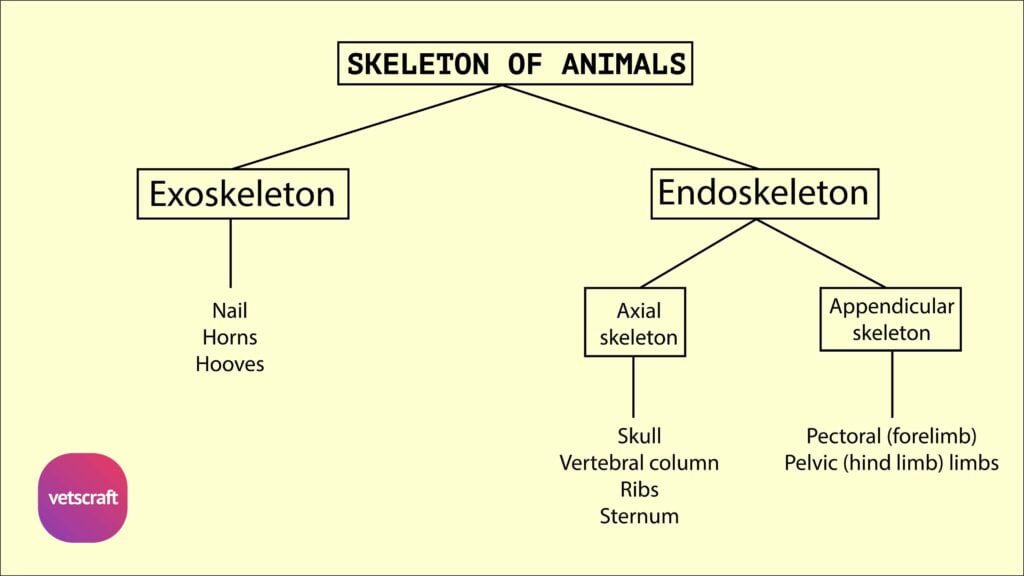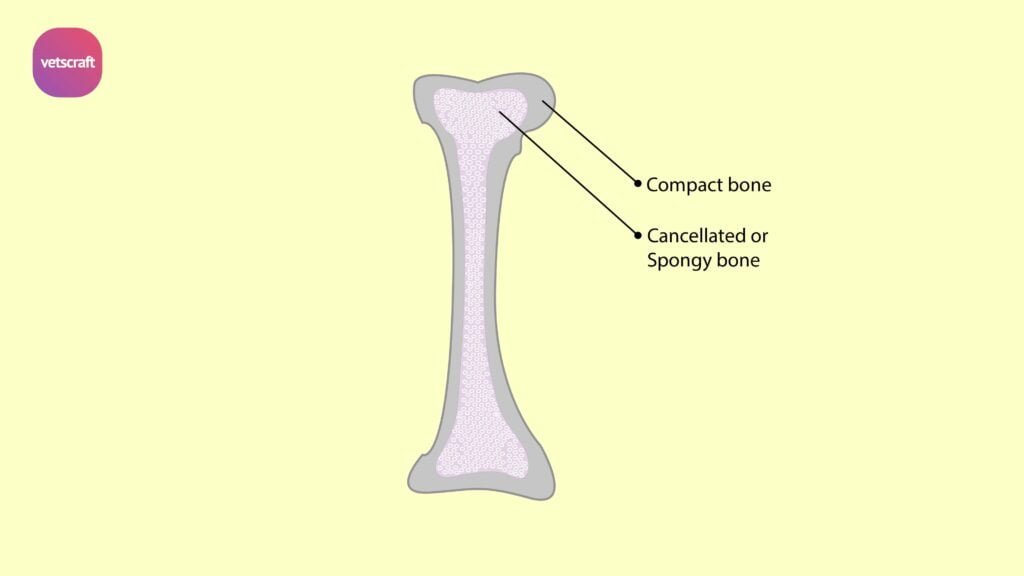TABLE OF CONTENTS
Ox
- Vomer bone of ox is a “U” or “V” shaped median bone, which forms the ventral part of the septum nasi.
- It is composed of a thin lamina, which is bent so as to form a groove to receive the perpendicular plate of the ethmoid and the septal cartilage.
- The lateral surfaces are covered by mucous membrane in life.
- The posterior part partly divides the posterior nares and is made up of two wings applied against the body of presphenoid to form the vidian or pterygoid canal.
- The ventral border lies in the groove formed by the palatine processes of the premaxillae and the maxillae and posteriorly is free and separated from the nasal floor by a considerable interval and hence the two posterior nares are separated only in the upper part.
Horse
- The ventral border is attached to the nasal crests of the maxillae and so the posterior nares are completely separated in the skull.
Dog
- Posteriorly it is not in contact with the floor of the nasal cavity and does not divide completely the posterior nares.
- Near the posterior nares the two plates of vomer curve outward and join the lamina lateralis of ethmoid and the palatine bones to form the lamina transversalis.
Fowl
- It is a slender rod extending forward from the rostrum of the sphenoid and is part of the nasal septum and is attached above to the septal cartilage in its anterior part.

